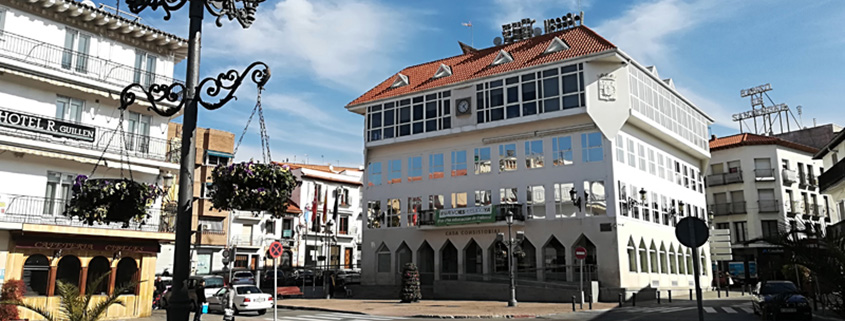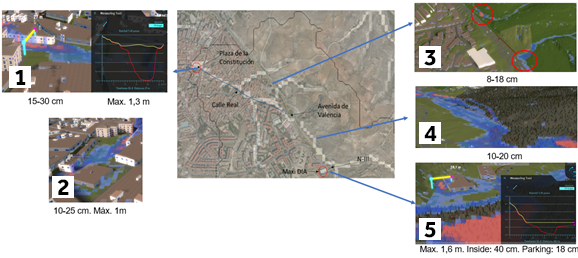The old town of Arganda del Rey is known to suffer from devastating consequences after episodes of heavy rainfall events. Besides, no local action or emergency plans regarding flood risks are currently in force. Considering climate change and the impending increase in extreme events (heavy rainfall), action needs to be taken without delay.
This short article is part of a Master thesis that aims to analyze the flood risks near the square “Plaza de la Constitución” in Arganda del Rey, Spain. To fulfill this objective, the following steps were taken:
First, a detailed study of the was carried out, identifying the so-called limiting factors for the subsequent modelling, namely: precipitation, topography, land use & vegetation, soil and sewage system. Groundwater was not considered in this study as groundwater level is found at more than 40 m below ground.
Second, the information gathered in the previous step was introduced in the Water module within the Tygron Platform. Later, the hydrologic and hydraulic simulation was run and several results such as water depth, velocity, flow direction or evaporation were analyzed. Also, the most affected areas within the watershed were identified.
Third, by using the Tygron simulation results (water depth and surface occupied by water) a risk analysis was conducted using a tool commonly used in Spain, named iPresas Flood. It should be mentioned that the risk analysis could have been performed somehow by using Tygron and its wide variety of water indicators, but as a matter of time the other software was used instead.
Fourth, flood risk reduction measures were proposed not only in the most affected areas but in the whole watershed.
For the sake of brevity, only the hydrologic and hydraulic modelling performed with Tygron (i.e.: the third step explained before) and future steps regarding risk reduction measures functioning (i.e: fourth step), are explained below.
In order to get a full picture of the probable rainfall situations, five (5) simulations were run. A broad range of probabilities was taken into account: from the most favorable scenario (10-year period) to the least favorable scenario (500-year period), considering between them, 25, 50, 100- year return period scenarios.
The main affected areas were the square “Plaza de la Constitución” and street “Calle Real”, the road “Avenida de Valencia” and the supermarket “Maxi DIA” (see Figure 1). In the five scenarios, special attention was paid to residential and economic activity areas as well as water accumulation areas.
Comparing the results obtained after the favorable scenario simulation with the information publicly available after the heavy rainfall event of the 26th of August 2019 (equivalent to a 10-year return period), the correct operation of the water module within Tygron is verified.
As future steps, in order to understand the effectivity (in terms of risk reduction) of the proposed measures, a simulation of these should be run in Tygron. Then, a comparative analysis of the results both with and without measures can be done.
Carmen Merino Zamora (2021)







